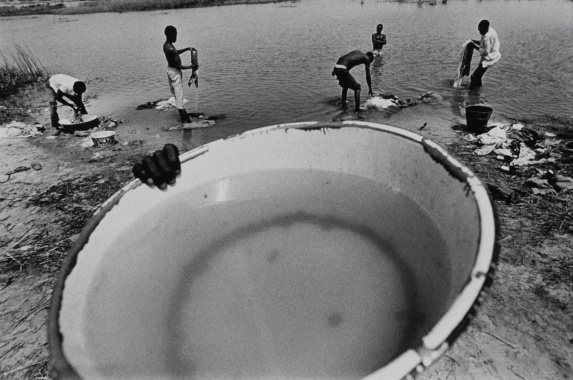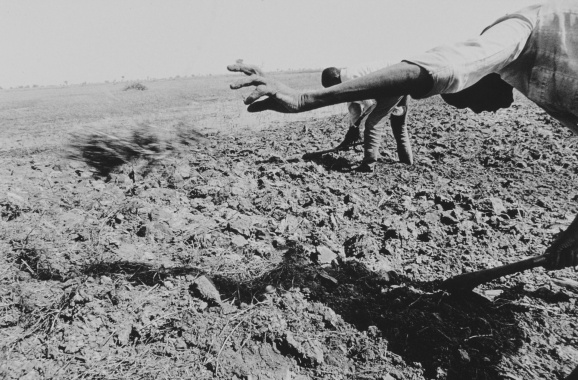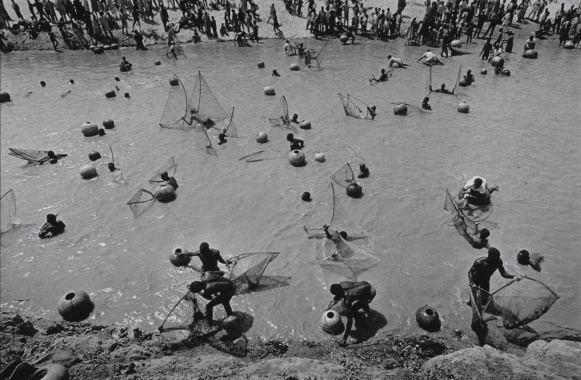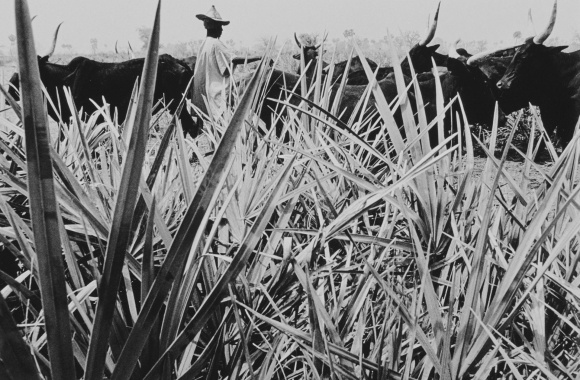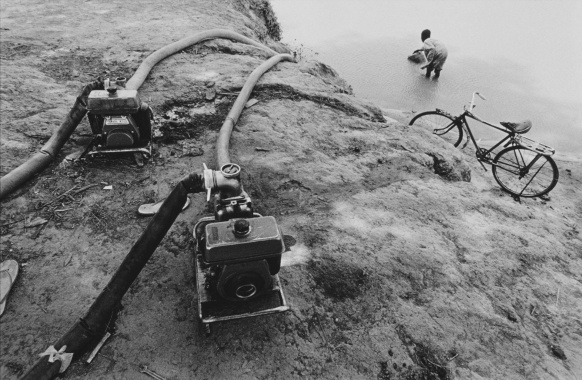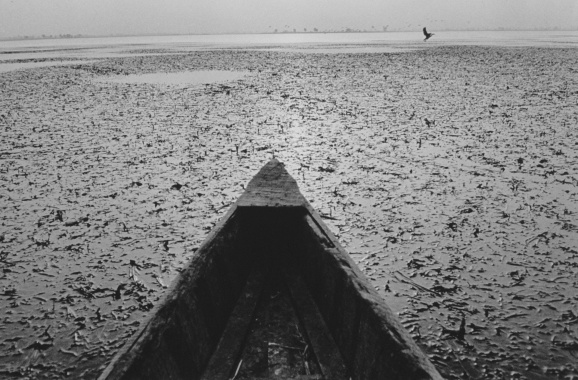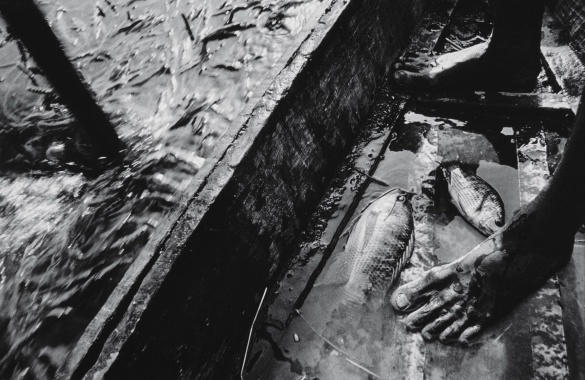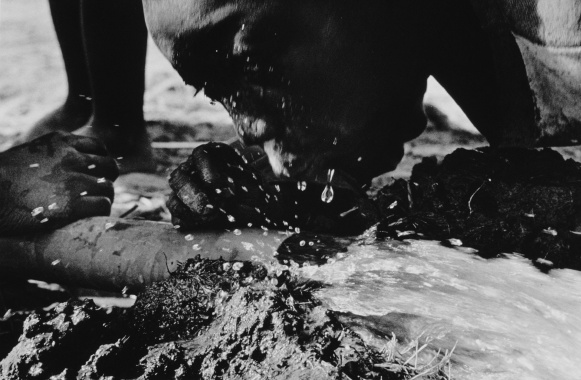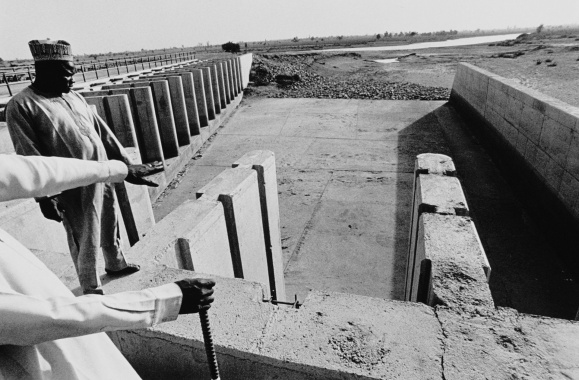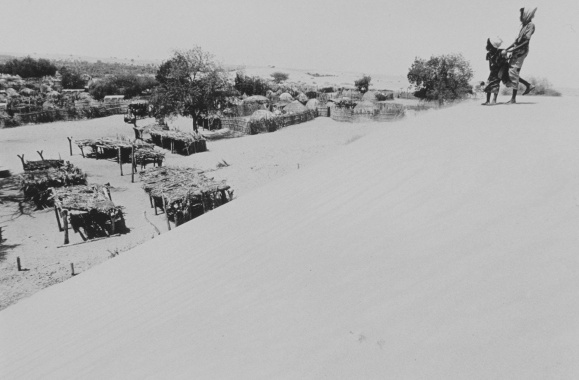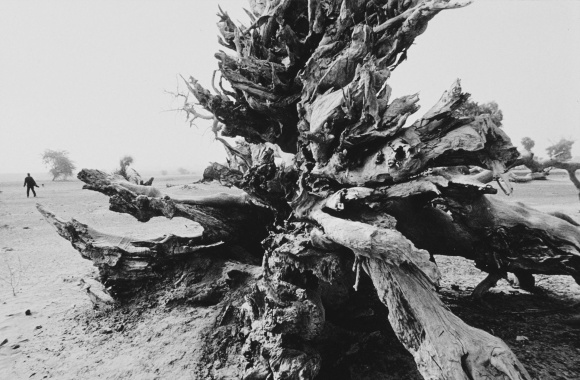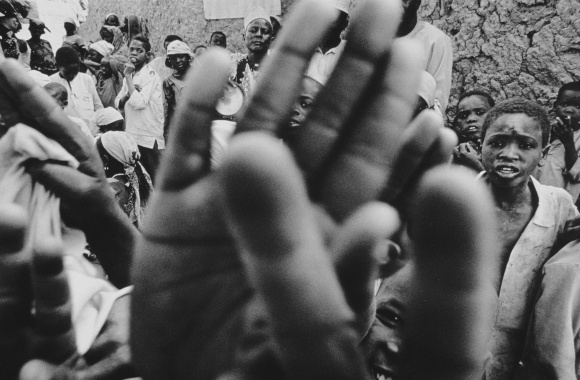Eugene Richards – Death of an Oasis, 1993/94
As it develops irrigation projects in an attempt to green the edges of the desert, the Nigerian government is managing to dry out the last of the country’s wetlands. U.S. American photographer Eugene Richards and environmental author Fred Pearce travelled together, for the magazine Audubon, to an oasis that seems doomed to die.
The northern region of Nigeria was once rich in flora and fauna, with plenty of grass and birds. However, in January 1992, when Eugene Richards headed there for ten days on assignment for the magazine Audubon, he found a wholly different reality. He discovered and documented an area where there was water everywhere, but drinking water was in short supply. The ground was eroding, and the desert was spreading out, due to overgrazing, drought, and bad water management. Even though the expression “global warming” was not very widespread at the time, his photo series dedicated to the Hadejia-Nguru wetlands can be understood as a warning for the future. The threat to the survival of this part of the world remains.
“I remember I was just taking a shower, when someone called me at home to let me know that I would be receiving the LOBA. I was incredibly surprised and delighted.”
Richards’ powerful images, photographed in black and white, capture the lives of people in the northern part of Nigeria, and how they survive from fishing and cattle raising. His impressive series shows their continual fight against weather conditions, as well as the destruction and the exploitation of their habitat. In a region where virtually all the year’s rainfall is limited to August and September, and where the density of population is high, the wetlands are an absolutely necessary resource. Their continued existence is imperative for maintaining life. “For nearly twenty years, successive Nigerian governments and western advisers have tried to develop the edges of the desert,” the photographer explains. “They want to turn it green, by taming the water behind dams and deviating the reserves into large irrigation projects. Their efforts might just transform the wetlands into a dust bowl.”
Even though people are at the centre of Richards’ work, there are times when just excerpts appear in his photographs: a hand raised, as a worker carries out tough physical labour in the fields; two feet trying to find a grip, seeking balance between the boat and the water. With poetry and insight, his images describe the incredibly difficult lives of the locals, amid the destroyed landscape around them. The surroundings appear like a mixture of technology and mud, of brutal intrusion and past beauty. It is an apocalyptic place: an oasis of death. Eugene Richards won the 1993/94 LOBA in the Environmental Story category. “I remember I was just taking a shower, when someone called me at home to let me know that I would be receiving the LOBA,” he recalls. “I was incredibly surprised and delighted.”
“As to whether photography should be political, a part of it should always be political, of course.”
Eugene Richards is now 75 years old. He is one of America’s most important photographers and was a member of the renowned Magnum Photo Agency for a long time. His career spans 50 years. Since 2017, three large museums in the United States have hosted retrospectives of his work. His oeuvre is defined by black and white film, and includes books, magazine assignments, photo reportages, and films. His work is frequently characterised as “very personal”. Richards was involved in efforts against the Vietnam War and for the Civil Rights Movement. He founded the human rights organisation Respect. Consequently, his pictures can be understood as an appeal to viewers’ awareness. “In the times we live in, photography is becoming increasingly political,” he finds. “Magazines and the web are mostly full of staged portraits and so-called art photographs. As to whether photography should be political, a part of it should always be political, of course.”
(Text written in 2020)
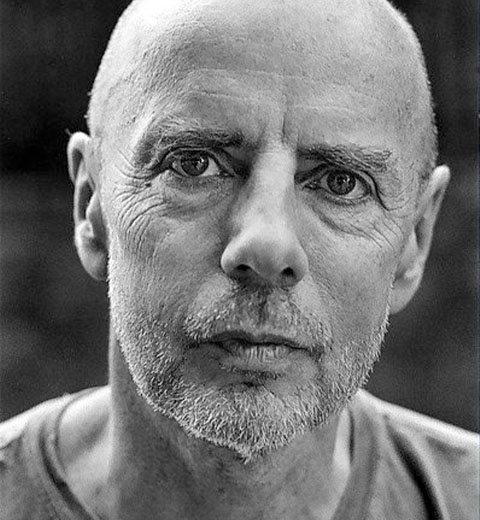
Eugene Richards
Eugene Richards was born in Massachusetts in 1944, and completed studies with the photographer Minor White. Many journeys took him to Africa, and also through his own homeland. He has been dedicated to the Arkansas Delta for nearly fifty years; his first book „Few Comforts or Surprises“, about people living in poverty in rural areas of Arkansas, was published in 1973. He is currently planning another publication about the Delta region. It reports on workers and their production methods in a small town on the Mississippi.
Portrait: © Jocelyn Bain-Hogg
